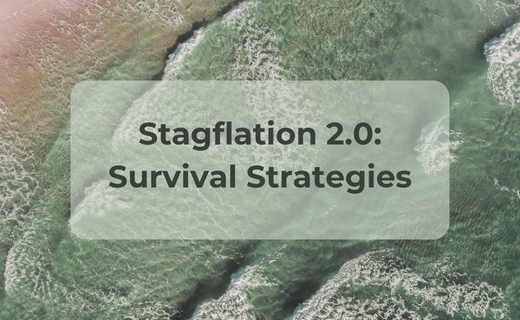Introduction
The COVID-19 pandemic triggered global economic transformations. Its impact still affects businesses today. For owners of medium and large enterprises in Europe, navigating post COVID inflation means facing unpredictable price changes and unstable cost structures. It also involves adjusting to shifts in consumer purchasing power.
In this uncertain environment, traditional forecasting models have become less reliable. To make sound strategic decisions and maintain profitability, business leaders must adopt new methods. This article explores key macroeconomic factors driving post COVID inflation. It also outlines adaptive forecasting tools tailored to business needs.
Inflation in Numbers: What Matters for Business
According to the European Central Bank (ECB), average inflation in the eurozone will reach 2.0% in 2025. It is expected to drop to 1.6% in 2026, then return to 2.0% in 2027 (ECB, June 2025). At first glance, this may signal stability. However, for businesses, the components behind these figures are more significant.
For example, energy prices declined by 3.6% year-on-year in May 2025. This deflationary trend lowers operating costs in the short term. However, energy markets remain highly sensitive to geopolitical events. In a post-COVID inflation environment, these fluctuations can quickly reverse.
Additionally, labour costs are increasing. The ECB projects nominal public sector wages will grow by an average of 4.1% between 2023 and 2025. As a result, private companies may face rising wage expectations and operational costs.
Strategic Implications of Structural Shifts
Supply Chains and Production Costs
Today’s inflation stems more from structural than cyclical causes. For instance, the pandemic exposed vulnerabilities in global supply chains. As a result, many businesses are moving production closer to home. This change increases costs but enhances supply chain resilience.
Green Transition and Compliance
Regulatory pressures and ESG commitments also require investment in sustainable practices. In the short term, these efforts can raise expenses. However, they may lead to long-term savings and improved brand reputation.
Labour Market Pressures
Post-pandemic demographic changes and a shrinking workforce are pushing wages higher. This creates challenges for HR departments. However, businesses that invest in employee retention and automation can stay competitive.
Understanding these trends is essential. It helps build inflation-resilient business strategies.
Why Traditional Forecasts Fall Short
Weakening Economic Correlations
Many firms still rely on classic forecasting models. However, these tools often fail in the current climate. For example, the traditional Phillips curve—linking inflation and unemployment—has weakened.
Global vs Local Influences
Post COVID inflation is shaped by global factors. Commodity prices, trade flows, and political instability affect inflation beyond national borders. As a result, national models alone can mislead decision-makers.
Consumer Behaviour Shifts
Consumer preferences have changed. People now save more, shop online, and respond differently to price changes. For this reason, forecasts based on past behaviour are less reliable.
Forecasting Tools for Post-COVID Inflation
AI and Big Data Analytics
To stay ahead, companies need advanced tools. Artificial intelligence helps by analysing vast data sets in real time. For example, it can track news, prices, and consumer sentiment.
Microeconomic Insights
Detailed data at the industry or regional level allows businesses to fine-tune their forecasts. This approach is more useful than relying on national averages.
Behavioural Models
Understanding how people react to economic changes improves predictions. Surveys and digital activity data offer insights into consumer and business sentiment.
Scenario Planning
Instead of one projection, businesses should consider multiple scenarios. These may include optimistic, baseline, and worst-case options. This strategy allows flexibility and faster responses.
Impact of Regulation on Strategy
Monetary Policy Adjustments
Central banks play a key role in shaping inflation. Interest rate decisions and liquidity controls affect loan availability and investment costs. In the post-COVID inflation environment, policy decisions must balance growth and stability.
For example, overly strict policies may limit economic recovery. However, loose policies could increase inflation expectations.
Fiscal Policies and Consumer Demand
Government actions, such as subsidies or tax breaks, influence consumer behaviour. For instance, wage support boosts household income. As a result, demand may rise in the short term.
Businesses that track these policies can adapt more effectively. This helps them stay profitable and responsive.
Regional Differences in EU Inflation
Inflation across the EU is not uniform. Countries dependent on energy imports, like Germany or Italy, face different risks. By contrast, nations with flexible labour policies, such as the Netherlands, are more resilient.
Therefore, a single model cannot fit all. Businesses need modular forecasting tools tailored to each market. This is especially important when managing post-COVID inflation risks.
Strategic Actions for Businesses
To navigate inflation successfully, businesses should consider several actions:
- Invest in real-time analytics and expert forecasting partners;
- Use flexible, scenario-based budgeting tools.
- Include price-adjustment clauses in supplier contracts.
- Incorporate ESG and climate risk into long-term plans.
- Manage labour costs while maintaining competitiveness.
These steps help build resilience and support strategic goals.
Our expert guidance in business forecasting will help you mitigate threats and transform external challenges into strategic opportunities. [Contact Us]
Conclusion
Post-COVID inflation is not a short-term trend. It reflects structural changes in the global economy. While ECB forecasts suggest a return to the 2% target, risks remain.
Advanced tools and scenario planning are now essential. They help businesses stay agile and informed. In this evolving landscape, inflation should be treated as a core factor in every strategic plan.





